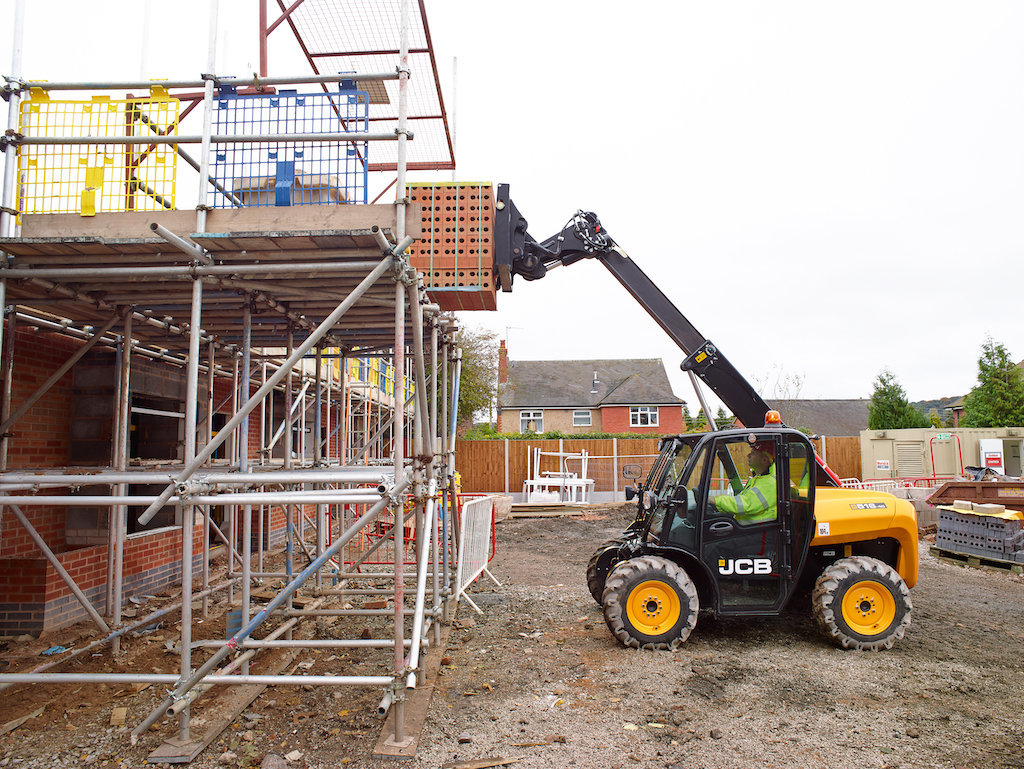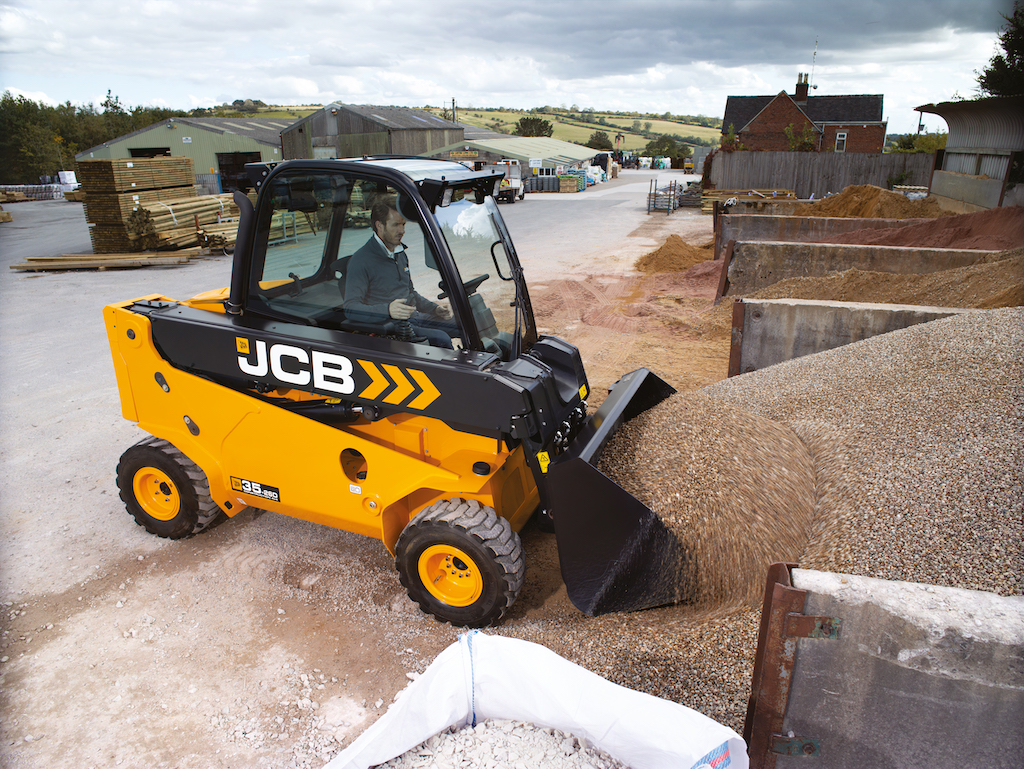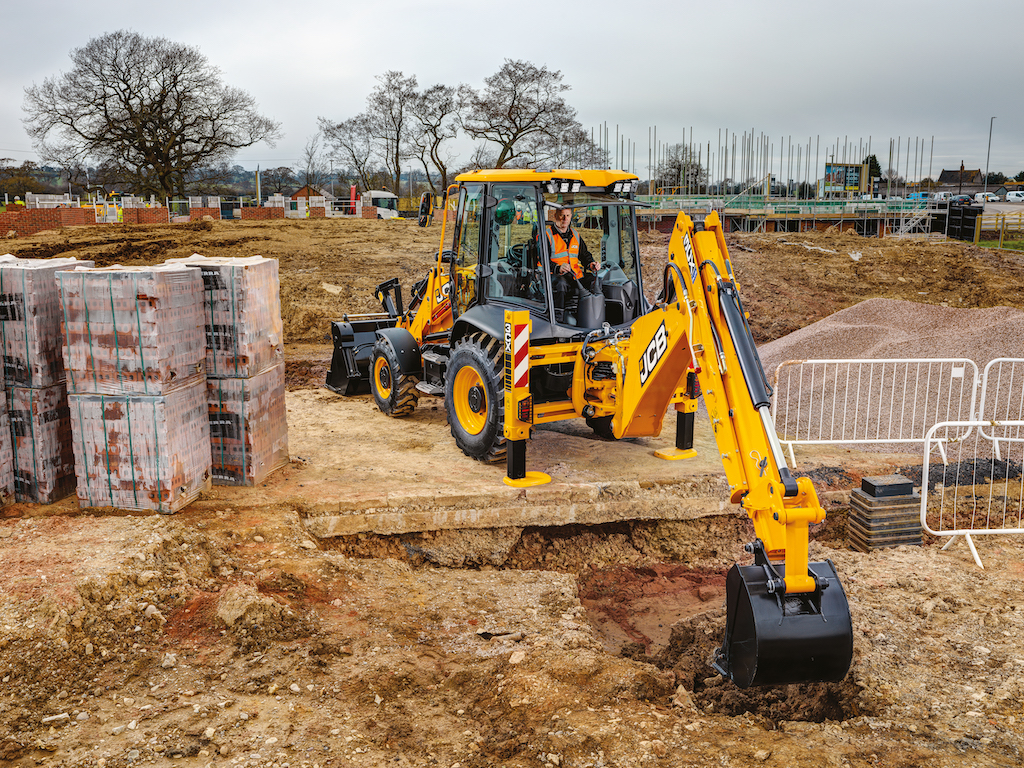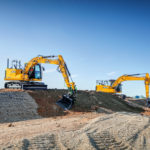The stage is set for a stellar cast of JCB launches. Construction Plant News Editor, Lee Jones looks at the manufacturer’s latest clean diesel solutions.
In the spring and early summer of 2020 the global market for construction equipment collapsed by 50 per cent of its value, and assembly lines around the world were halted. Fast forward twelve months and the construction and infrastructure sectors have been specifically leveraged by legislators across the globe to stimulate economies. The UK is no exception, and, with a commitment from government to improve our roads, railways and housing, that rebound will hold firm.
That means machines will be required in ever increasing numbers, but they will need to be delivered sustainably. With its Road to Zero initiative, that’s a journey that JCB is already well advanced, with the manufacturer already having reduced the carbon footprint of its machines by 50 per cent in just the last ten years.
“Our challenge has been to meet the more stringent Stage V standard and to do so without impacting on machine performance”, declares Ryan Ballard, Engineering Director at JCB, “whilst also creating the least inconvenience to our customers. The focus has been on finding answers to particulates without simply bolting on a DPF, and we’ve done that with a marriage of low emission combustion systems, filters, and catalysts, managed by engine and aftertreatment control technology, all of which ensures that exhaust emissions are minimised over the widest range of operating conditions.” Most importantly for customers these developments are invisible, requiring no intervention in terms of additional maintenance, and all fitting within existing canopies.
The Stage V, 4.8-litre JCB DieselMax 448, which is now powering the manufacturers 140X, 150X and 220X crawler excavators, exemplifies that guiding principle. On the 14 and 15-tonne machines the 448 replaces the 4.4litre EcoMax engine but delivers the same 81kW (108hp) power output, but with 516Nm of torque – a massive rise of 135Nm. On the 22 tonne X-Series the new Stage V unit is replacing the EcoMax 448 Stage IV engine and offers the same 129kW or 172hp with 690Nm of torque. The transition to Stage V has allowed the manufacturer to update additional features on these crawler excavators, including enhanced cab specification, climate control air conditioning, and 15 per cent more space for the driver.
In addition, a new Selective Catalytic Reduction Filter (SCR-F) that comprises a combined SCR, Diesel Particulate Filter (DPF) and Diesel Oxidation Catalyst (DOC) provides a completely integrated solution. There is no longer a requirement for Exhaust Gas Recirculation (EGR) and the system has been removed from the new inlet manifold, resulting in a cleaner burning engine.
Similarly, the 3.0-litre JCB DieselMax 430 continues that theme of smaller capacity combined with greater efficiency. It has replaced the existing 4.4-litre unit and achieves a 55kW or 74hp output with 440Nm of torque – a 10 per cent increase on the outgoing model – complemented by a 7 per cent fuel saving compared to the previous Stage IV solution.

JCB loadalls equipped with the 430 engine have been available since the end of 2019, but operators now have a choice of engine, with machines ranging from the 7m, 531-70 up to the 20m 540-200 all available with the 4.8-litre 448 DieselMax. The latter engine supplies 81kW or 109 hp with auto-start a common feature across all these units. Here, the system stops the engine after three minutes of continuous idling, saving fuel, reducing emissions, and soot build up in the DPF, the presence of which can equally be accurately monitored by the JCB LiveLink system.
The Staffordshire-based manufacturer describes its suite of particulate control technologies on the 448 as a “compact one-can solution”. Again, this includes a Diesel Oxidation Catalyst (DOC) with a combined and integrated Diesel Particulate Filter (DPF) and Selective Catalytic Reduction (SCR), which eliminates the need for Exhaust Gas Recirculation (EGR). That the new Stage V JCB engines fit within the existing geometry of its machines will be particularly welcome on a telehandler, where visibility over the boom and engine canopy are paramount. Indeed, the addition of an integrated vent grille has meant that the exhaust pipe is no longer visible, and right-hand line of sight over the engine pod has actually been improved slightly.

Stage V upgrades are not just about advances in diesel but, just as with the Loadall, can bring bring other benefits besides. With a lift capacity of 2 ½ tonne, and 2m of forward reach, the forklift functionality and telescopic ability of the JCB Teletruk already made it a versatile concept. Thanks to the addition of a 46kW, 62hp JCB by Kohler unit with auto stop and combined DPF and DOC there’s now greater lifting potential at full reach, new machine styling, and a CommandPlus cab, together with easy-to-use fully proportional single lever electro-hydraulic controls. In fact, at 2m reach, the Teletruk now has the muscle to maneouvre up to 200kg in additional weight.

Another JCB solution that benefits from a Stage V JCB by Kohler powertrain is the G40RS V generator set, part of the manufacturer’s Rental Series (RS) range. Equipment destined for the hire sector need to be robust, and the RS powder coated, corrosion resistant and 2mm thick steel canopy is just that, whilst an over-gauge base frame is complemented by the mobility of integral fork pockets. The G40RS V supersedes the Stage IIIA G36RS model delivering 40kVA at 50Hz frequency, through a 42.4kW (57hp) four-cylinder turbocharged engine that makes use of both DPF and DOC without SCR.

The iconic backhoe loader also takes to Stage V with the 3CX, 4CX and 5CX PRO adopting the latest technology. Again, there’s not just more power and less cost but a raft of new features including the CommandPlus Cab. The 81kW (109hp) engine replaces the previous 68kW (91hp) unit, and also benefits from Auto Stop.
When it comes to all of these solutions the direction of travel is clearly set towards more power and torque with greater fuel efficiency, but in an increasingly compact overall package. It is a balance that a more sustainable future demands and one that JCB Stage V solutions are delivering.









